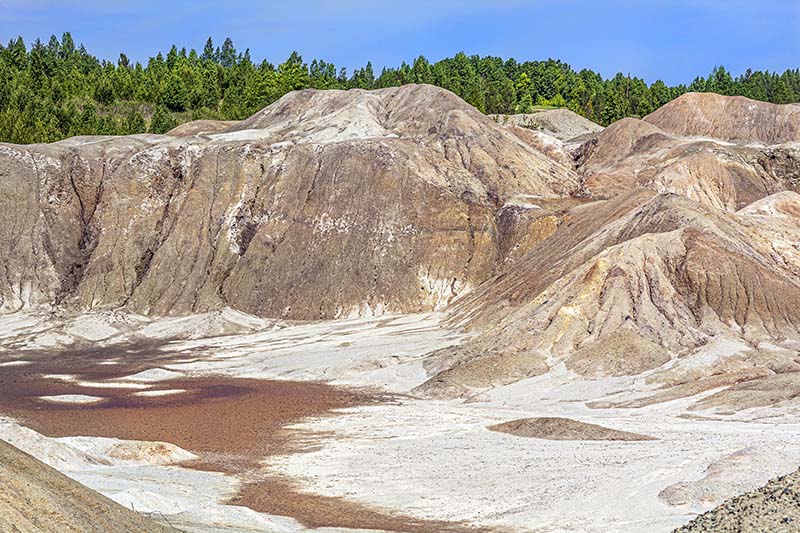In this article, you will find out everything you need to know about monolithic refractories, including castable refractory cement and the various materials that you will typically find in them. Whether you are entirely new to the subject, or you’re seeking further information, this article will clue you in completely.
What Do You Mean By Refractory?
By its very definition, refractory means resisting control or authority: stubborn and unmanageable. In relation to materials, a refractory is a material that is highly resistant to decomposition by heat, high pressure, or chemical attack. It also retains strength and its form at higher temperatures. Refractories are typically inorganic, nonmetallic, heterogeneous, and porous materials.
What Is A Monolithic Refractory?
With that in mind, what is a monolithic refractory? Well, a monolithic refractory is a term used to describe all unshaped refractory products. The word monolithic as you may already know is derived from the word monolith, which means “large stone”. Thus, these are materials that are incorporated into suspension, hardening into a solid mass of stone-like material.
You will find monolithic refractories in many industrial applications, including the non-ferrous metallurgical, cement, steel, petrochemical, and waste disposal industries. Monolithic refractories can be available in a wide range of different forms. The key properties that make up these materials are resistant to thermal shock, abrasion, and mechanical integrity.
Most monolithic refractory formulations will contain high refractory particulates (which is an aggregate), a binder phase (something that gels the particulates together), and fine filler materials (which then fill the antiparticle gaps, thus forming a solid mass).
Upon the installation and curing of monolithic refractories, they need to be properly regulated with a dry-out schedule for optimal performance. This allows the fillers, aggregate, and binder (as mentioned above), to form an incredibly strong and durable material. Should the dry-out schedule be uncontrolled, then there can be explosive spalling as a result. This can lead to major unnecessary repair work and a substantial loss in revenue that can all too easily be avoided. The dry-out phase is crucial, in other words.
The fact is, explosive spalling is typically caused by water trapped inside the structure of cementitious materials. These then heat incredibly quickly, forming steam with intense vapor pressure. Following that, disastrous failure to the structure occurs.
What Is A Castable Refractory?
A castable refractory, on the other hand, is a non-metallic material that has physical and chemical properties that are used to build highly heat-resistant structures that can retain heat. Due to the intense resistance to heat and thermal shock, castable refractory types of cement are typically used for building kilns and other kinds of furnaces.
These high-strength materials are durable, offering low heat conductivity, making them excellent for creating structures due to their serious stability. That said, before using such materials you must fully understand the properties and applications of the various mixes in question in order to ensure that you have the right material for the job. Again, mistakes at this level of composition can be disastrous.
By understanding the raw materials that are used to create these mixes, you will be better prepared to succeed. These are the three key materials that are used to make castable refractory products on the market today:
What Is Castable Refractory Cement Made Of?
- Perlite: Perlite is an entirely natural siliceous volcanic material that is formed by the sudden cooling of volcanic ash which subsequently solidifies. The cooling process traps crystalline water in the ash’s mass. These mixes tend to be used in construction applications, and aerating soil. Perlite is most commonly mined in the US, Greece, Italy, and China!
- Vermiculite: Vermiculite is a hydrous phyllosilicate mineral that is naturally occurring. It’s an alteration product that forms every time a certain rock type forms next to one another. Then, when heated up to 572 °F, an exfoliation event occurs, causing the vermiculite to expand more than 30 times its original size! This material is mined in SA, Russia, China, and Brazil. Both vermiculite and perlite can withstand temperatures of up to 2100 °F!
- Crushed insulating firebricks: These are most commonly used as an alternative to core raw material for creating castable refractory products for insulating. Crushed insulated firebricks (IFB) offer a superior heat resistance to perlite and vermiculite, coming in with a tolerance of up to 2800 °F! Thus, this material contracts very little during high-temperature situations.
These three raw materials are only the beginning. In fact, the castable refractory industry is using a huge variety of materials to create many unique mixes that are being used in a variety of special applications. Thus, if you have a particular application in mind, you should match the material properties to the requirements of your project in order to get the best possible results.
Conclusion
Understandably, this is an incredibly specialist and in-depth subject that requires careful consideration. If you are feeling overwhelmed by this knowledge and you would like some help from specialists who are well-versed in the art and science of refractory, then we highly recommend contacting a reputable company for more information. This will help you get a better idea as to which materials will be best suited to your specific application.
In any case, we wish you the very best of luck with your project. Just take your time and do plenty of research before rushing in with anything.
